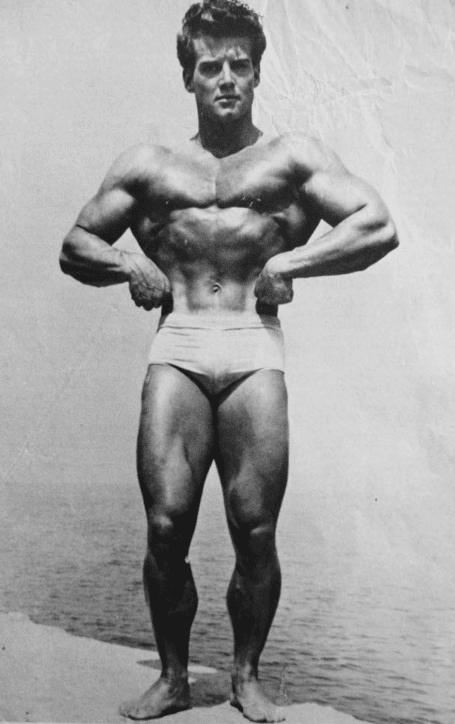Update: You need both for bodybuilding. The soleus won’t activate intensely on standing calf raises for the gastrocnemius since it has poorer leverage (closer to the ankle). The standing version is more efficient then but not complete!

Bodybuilding has long endorsed both standing & seated calf raises.
When your knee is extended while performing a heel raise, you’ll feel tension in the gastrocnemius, hence the need for standing calf raises.
When your knee flexes, you feel tension shift to the soleus, hence the need for seated calf raises.
I figured some neural reason accounted for the difference, perhaps to allow efficient locomotion?
I even pondered if a “bent-to-straight” heel raise may combine them, with each half of the range of motion emphasizing a muscle. (Due to concurrent movement, this would focus on the single-joint soleus anyway.)
When trainees feel the contrast between knee angles though, I suspect they aren’t using enough weight & range of motion to have both muscles activate intensely.
When the knee is straight, passive tension from the gastrocnemius bears most of the load, so the soleus goes nearly silent with light resistance.
Research, and careful experimentation, tell a different story…
Why You Don’t Need Seated Calf Raises
As the gastroc length is reduced, the soleus must compensate to continue moving or fail to do so.
What happens is that muscle fiber bundles called fascicles overshorten within the gastrocnemius to severely limit active tension, so the neural system disables it.
However, the science makes clear that soleus activity is unchanged between extended & flexed knee joint conditions during a MVC.
The MVC is what matters! Both contribute greatly when either the weight is increased, or the effort is high, on standing calf raises.
For the same weight, it makes sense that your gastrocnemius would have an inverse relationship with soleus activation since additional muscle is involved. They each work less hard for a given load.
An extended knee also prevents the gastrocnemius from cramping due to overshortening, an uncomfortable & distracting sensation that you may have felt during seated calf raises.
Most seated heel raises are done at a 90° angle for the knee. However, similar fatigue may occur for both muscles even as flexed as 45 degrees. Some other studies show a difference, though very slight.
This isn’t much different from the biceps failing to activate on reverse curls due to a pronated grip, since its tendon wraps around the radius. This leads to higher brachioradialis & brachialis activity to handle the weight. You’ll curl far less.
On a near-full supinated EZ-bar curl though (to reduce wrist & elbow stress), all the elbow flexors contribute! The brachioradialis just stretches less during supination.
This highlights a major flaw of traditional bodybuilding advice: why isolate a muscle by disabling larger ones unless you have some (rare) weakness to address?
Doing both seated & standing heel raises only increases work for the soleus. The soleus gets plenty of work from exercises like dead-lifts too, while the gastrocnemius has poor leverage on leg curls.
Overdeveloping the sole is could ruin that diamond shape from the gastrocnemius that looks so impressive, instead forming an unshapely bulk that old-time bodybuilders often criticized.
How to Do a Standing Calf Raise
With limited equipment at home, you can do a single-leg calf raise off the ledge of a stair with your bodyweight.
Hold a dumbbell with one arm and the other grabbing something like a rail or wall for balance. I prefer using a dip belt with plates though. Machines are only more convenient!
Keep only a slight bend in the knee to get enough range of motion at the ankle, stretching both the gastrocnemius & soleus. Keep your knee angle fairly stable to avoid drastically changing the gastrocnemius’s length.
Donkey heel raises are famed for their uncomfortable stretch, as the hamstrings may pull on the calf tendon for an even deeper stretch.
You could also lean forward such as on a Howorth calf raise, advocated by Vince Gironda, with the hardest part of the range of motion causing the greatest stretch too.
This mindset applies to standing versus seated calf raises too, which stretch the gastrocnemius & soleus better respectively.
In the long run though, I don’t feel these deep stretches are needed.
Passive tension may lead to a small burst of growth at the distal end of the muscle, but this doesn’t seem lasting versus progressive overload developing sarcomeres in-parallel, facilitated by overloading stretched-to-medium positions.
Any extreme or unusual form of plantarflexion could also irritate the Achilles tendon.
Other techniques like pushing through the big toe or pointing your toes outward & inward, encouraging inversion or eversion, or anything else is unlikely to make a difference, just slightly elongating the medial or lateral gastroc head.
If anything, you’d want to emphasize the gastroc over the soleus. Doing knee flexion with plantarflexion, similar to supinating on curls to emphasize the biceps through countercurrent movement, could achieve it. This isn’t practical though and definitely unnecessary.
I recommend equal sets & reps as other exercises, though I like sets of 10-13 versus my preferred 8-rep count due to the shorter range of motion.
It’s possible the calves tolerate more work due to a lower proportion of fast-twitch fibers compared to other muscles, justifying more work, but they may just have less growth potential however done.
Focus on Standing Calf Raises
Bodybuilders rightfully consider the calves as stubborn muscles, influenced especially by heredity. Give yourself the best chance to develop them with a sensible exercise selection.
For the utmost size, instead of seated calf raises, you could try dorsiflexion (toe raises) to work the tibialis anterior in the front.
You can also experiment with more volume & frequency, but stick exclusively to standing calf raises whatever your choose!
